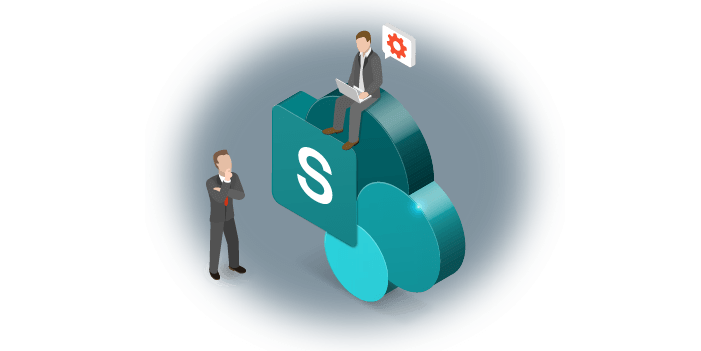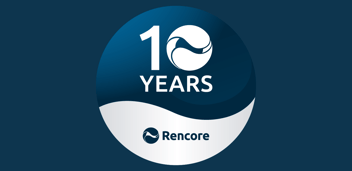Achieving complete autonomy at work, I’d argue, is a tough ask. But within an organizational structure, employees can be empowered to take on certain tasks that give them autonomy in the workplace to achieve business objectives within their departments and reach a collective organizational goal. Your workforce can leverage SharePoint and Office 365 to make this happen.
When I talk about autonomy, I mean being empowered to work independently within one’s job role to achieve a goal. With each goal you achieve, you become a master of those experiences and are more intrinsically motivated.
I believe that by empowering business users to undertake tasks to improve business processes, it will help them become autonomous and lead them to performing in a more intrinsically motivated way. Intrinsic motivation is considered more sustainable, organic, and long term than extrinsic motivation.
Both IT and business users have the option to extend SharePoint and Office 365 to achieve common business goals. And whether it’s a workflow to trigger automated emails or a more complex website build, the shackles need to be loosened, but not taken away completely for both the business user and IT to become more empowered to do their job.
Autonomy and intrinsic motivation are best friends, but let’s not forget that empowerment introduced them to each other.
IT holds the key to empowerment and autonomy at work
Whilst talking about extending SharePoint and Office 365, there is always the nagging thought about security and performance. In many organizations, tenants and farms are locked down. Only IT can create the solutions needed to drive SharePoint improvement.
On the flip side, other organizations may lack the understanding of who’s doing what. Citizen development, IT, and external development are contributing to a SharePoint Wild west scenario. Therefore, uncontrolled growth becomes problematic.
The reality here is that both situations are bad for business development.
In an ideal world, there must be a middle ground. Organizations need to trust users outside of IT to extend SharePoint, but IT needs a firm handle on who’s doing what. If IT can’t control SharePoint growth by discovering, understanding, and acting on findings swiftly, then business users can’t be empowered to create their own solutions in the correct way. An exceptional user adoption strategy must be in place, and IT can make that happen.
SharePoint and Office 365 user adoption: plan and execute
I recently attended two great sessions at the European Collaboration Summit 2019 – one by Neil Hodgkinson and the other by Jussi Mori. The one thing that really resonated with me was Jussi’s use of motivation theory (which includes autonomy at work and intrinsic motivation) to help explain the path to sustaining successful user adoption. I myself have been contemplating self-determination theory in relation to SharePoint and Office 365 use cases for a while.
What stood out for me in Neil’s session was the emphasis on pristine communication when planning projects: to identify, reach out, and keep in the loop all stakeholders who benefit from the solution or project. By doing so, it will increase the likelihood of successful deployment and user adoption.
He explains, by reaching out beforehand to department leads, decision makers, and employees who are likely to benefit from the project, they are more inclined to get on board with it from the get-go and help drive it. Once it comes to deployment and user adoption, it can be rolled out to those who have been in the loop. The solution is then successfully adopted by those under their supervision.
Communicating in this way makes the transition smoother, and along with the appropriate documentation and training, the new solution has more chance of being successfully adopted in the way it was intended.
Although Neil’s session primarily focused on Office 365 migration and Jussi’s on Adoption of Office 365 tools, I believe the fundamentals of their concepts can be applied to any project or process.
Culture change
Through extensive market research at Rencore, we have also identified communication as a common denominator when exploring the pain-points of SharePoint and Office 365 user adoption. Poor communication seems to be the root cause, and the symptoms that stem from that are confusion in common goals, misunderstanding of how things work, and lack of awareness of what users are doing.
IT often feels unable to trust and let go of certain processes due to fear of accountability and not knowing what is happening in the SharePoint and Office 365 environment under their watch.

By having the right tools in place to control SharePoint growth, you can change the current culture. IT can afford the time to train people the right way and equip them with the tools to succeed in creating basic SharePoint and Office 365 solutions for their departmental needs. They become empowered with each task they attempt as they learn, adjust, and move on, building up mastery of experiences.
Once users become competent, they are creating the processes they need to achieve business goals instead of having the constant back and forth between business and IT. Business can create the solutions they need to move forward, and being empowered, they work in a more autonomous way and move into intrinsic motivation to reach a certain level of autonomy in the workplace and their goals.
However, it’s imperative IT has the backing to implement a sustainable way to discover, understand, and act on the applications that are used to extend SharePoint. They need a way to automatically collect data regarding the number, modernity, and quality of solutions that all users create, making managing, mitigating and governing SharePoint and Office 365 attainable.
We are currently running assessments at Rencore which combine powerful insights through our award-winning software and comprehensive advice delivered by our experts. We provide best-in-class analyses, reports, and action plans for you to stay in control of your SharePoint and Office 365. Feel free to get more infomation or book an assessment by clicking the button below.






